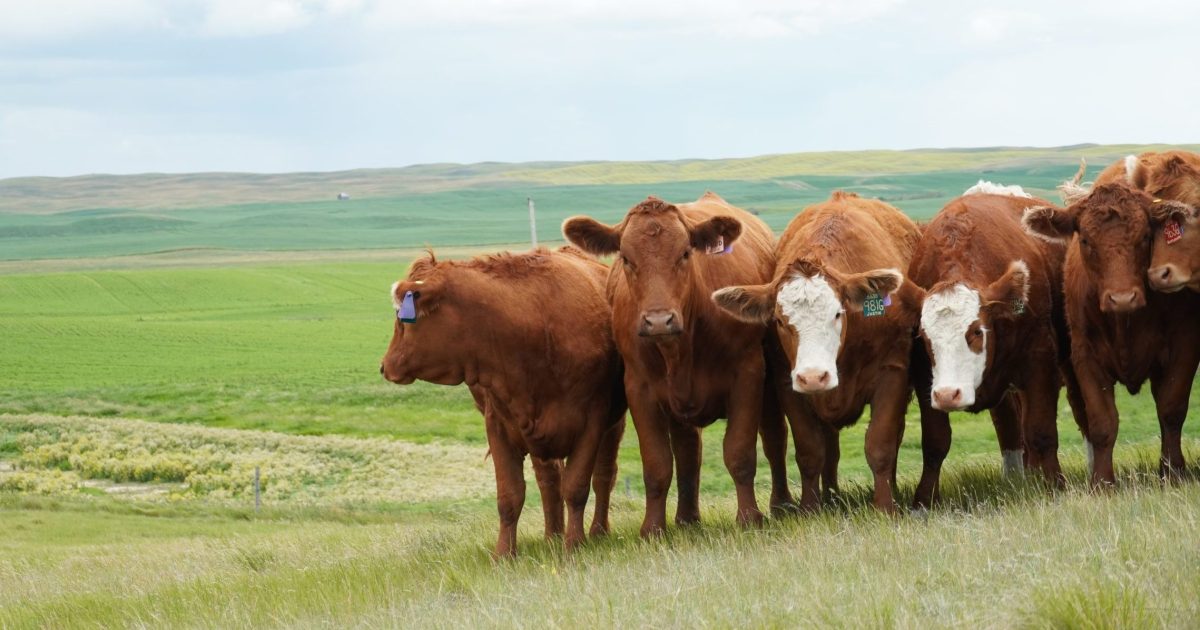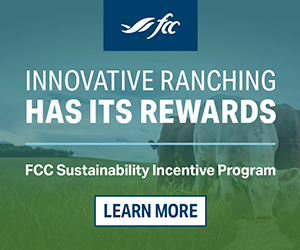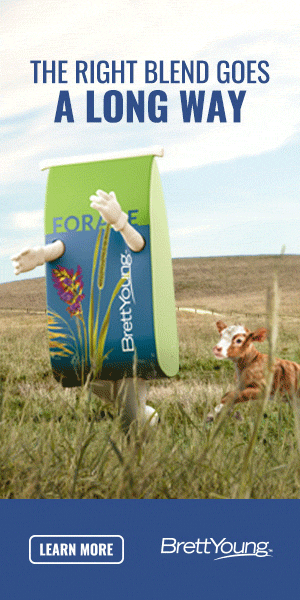AB Direct - Steers
Rail: ---
AB Direct - Heifers
Rail: ---
US Trade- Steers
Rail: 360.00 (IA)*few
US Trade - Heifers
Rail: 360.00 (IA)*few
Canadian Dollar
0.10

Taking a closer look at Johne’s disease
Johne’s disease is a sneaky production-limiting disease that damages herd health. We introduced Johne’s in the November 2021 issue.
A new digital risk-reward calculator has been developed to help beef producers predict the future spread of Johne’s in their herds, and compare costs and benefits of different management strategies.
As cattle herds grow and consolidate, the spread of Johne’s disease continues to be a concern. Research shows that the percentage of herds in Western Canada with positive cases is increasing, and larger herds are at greater risk.
The main symptoms of Johne’s include persistent diarrhea and weight loss. These symptoms appear in animals anywhere between two and 10 years of age, after it has likely spread to other animals.
“Johne’s is insidious, it can sneak up on producers, and it can skip generations before it shows itself clinically. Animals often don’t show signs until they’re five or six years old, and by then they’ve passed it on,” explains veterinarian Dr. Roy Lewis.
Cows spread Johne’s by shedding the bacteria in manure, often for months or even years before they become clinically ill. Adding to the complexity, infectious animals don’t shed all the time, which means tests may produce false negative results.
New risk-reward calculator
Johne’s has many negative effects on herd health: premature culling, replacement costs, loss of valuable genetics, reduced slaughter value, lost gain in calves, and increased costs for veterinarian care and testing.
To prevent increasing disease prevalence in the future, we should work to contain Johne’s now, suggests Dr. Cheryl Waldner, Beef Cattle Research Council Research Chair from the Western College of Veterinary Medicine and cow-calf producer.
“We do have an opportunity to contain it now, using good biosecurity together with testing and culling programs to reduce infections,” she says.
To help producers and veterinarians navigate control options, Drs. Waldner and Leigh Rosengren, veterinarian and Saskatchewan producer, introduced the Johne’s Risk-Reward Calculator in March 2022. This new digital tool is designed to help producers and veterinarians weigh the variables involved in deciding how to manage – and potentially eliminate – Johne’s disease from the herd.
A producer fills in required information describing their herd and runs the model. The results describe the likely percentage of Johne’s infected cows in their herd over time, and how culling and testing costs could be affected. The producer can then make selections to add blood and fecal testing with other control methods, and see how the number of Johne’s cases changes.
“We can use the calculator to try different testing strategies, replacement scenarios and disease management options to see what could happen to case numbers, culling losses and replacement needs,” Waldner explains.
Using a second, more advanced level of the calculator, producers and veterinarians can perform experiments to measure and compare possible disease outcomes from intervention and testing, and compare costs and profitability factors among these options, explains Rosengren.
The Johne’s Risk-Reward Calculator was populated with data from the Canadian Cow-Calf Surveillance Program (a project of the Beef Cattle Research Council), and the Saskatchewan Stock Growers Program.
“Several Saskatchewan beef producers with Johne’s disease in their herds provided their data anonymously. Because of this, we better understand how the disease spreads in Canadian cow-calf herds, and we translated their experience to what we might expect in other herds,” explains Waldner. “Real data from Western Canada has been critical to the development of this tool.”

Preventing disease spread
There is no licensed vaccine for Johne’s disease in Canada. The best way to control it is through prevention. Cows are most susceptible to contracting it in the first year of life, and about 30 per cent of calves from infected cows will end up infected.
Since Johne’s is fecally transmitted, producers can help prevent spread by providing dry pasture or clean pen conditions during calving and afterward. Specific suggestions from Waldner include:
- providing shelters for calves separate from cows;
- moving cow-calf pairs to a clean nursery pasture after calving, or regularly moving cows that haven’t calved yet to a clean place during the calving season;
- using lots of bedding when calving in corrals and barns;
- calving in areas with good drainage, to keep udders clean and reduce the likelihood of calves drinking from contaminated puddles.
“The biggest tool we have at our disposal is good biosecurity,” Waldner says. “This includes a number of management strategies focused on keeping Johne’s out of your herd and, if it is present, preventing it from spreading. Practices we already use to reduce the risk of calf scours also help reduce transmission risks for Johne’s disease.”
Any mixing with other herds, whether through the purchase of new animals or use of community pastures, can increase the risk of Johne’s disease. “If producers continue to use management tools like keeping cattle spread out more widely in pastures, watching manure handling, keeping things clean, and so on, they can help prevent transmission,” says Lewis. “When we start to recognize it and eliminate it, I think the incidence can be kept very low.”
Calculate the benefits
The calculator shows that, while there are many interesting approaches, there is no one best strategy. “You really need to think about your vision and goals for your herd. There is no simple answer, so as a health team we need to sit down with producers and accountants and look at the long-term plan,” says Rosengren.
“Despite diagnostic costs, we can bring disease prevalence down with minimal or positive effects on profitability,” Rosengren concludes.
Producers can access the new tool and instructional videos through www.beefresearch.ca.
This article was first published in Volume 2 Issue 2 of ABP Magazine (April 2022). Watch for more digital content from the magazine on ABP Daily.



